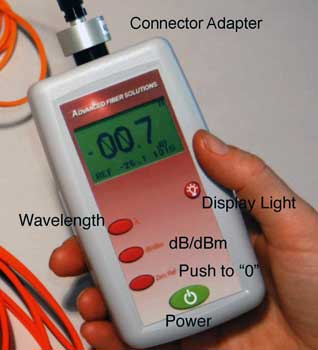How an optical measurement system improves production accuracy
Wiki Article
All You Required to Know Concerning Robotic Vision and Its Applications in Advanced Optical Dimension Solutions
Robotic vision represents a significant advancement in the junction of computer system vision, man-made intelligence, and artificial intelligence. This modern technology improves the precision of optical measurement systems, making it possible for real-time data analysis and boosted quality assurance. Its impact spans numerous industries, from manufacturing to health care. The advancing landscape of robot vision raises concerns about future abilities and applications. What developments exist in advance in this transformative field?Recognizing Robotic Vision: Secret Concepts and Technologies
Robotic vision encompasses the modern technologies and approaches that make it possible for devices to interpret and recognize visual info from their setting. This field integrates aspects of computer system vision, expert system, and artificial intelligence to help with computerized decision-making based on visual information. Trick concepts consist of photo processing, which includes the improvement and evaluation of images to draw out meaningful functions, and item acknowledgment, which enables equipments to determine and categorize things within a scene.
The Combination of Robotic Vision With Optical Measurement Systems
As sectors significantly demand accuracy and efficiency, the assimilation of robotic vision with optical measurement systems has become a transformative strategy. This harmony permits robotics to regard and analyze their surroundings, enhancing the ability of optical measurement systems to examine and evaluate things with exceptional precision. By outfitting optical sensors with innovative imaging technologies, robot vision enables real-time data collection and handling, facilitating immediate adjustments to dimension criteria.The combination empowers automated systems to detect variations in measurements, surface area high quality, and placement, which are important in high quality control procedures. Boosted formulas, such as artificial intelligence, additional boost this assimilation by enhancing the systems' capacity to adapt to various atmospheres and situations. Consequently, the combination not just simplifies dimension processes however likewise lessens mistakes, guaranteeing that items fulfill rigorous industry standards, therefore strengthening the duty of robotic vision in the future of optical dimension systems.
Applications of Robotic Vision in Manufacturing
In modern manufacturing environments, making use of vision systems has reinvented manufacturing processes by allowing machines to perform jobs with exceptional accuracy and rate. Robotic vision systems are increasingly used for quality assurance, where they evaluate products for issues and assurance adherence to specs. These systems use cameras and progressed algorithms to assess products in real-time, significantly lowering the danger of human error.Additionally, robot vision promotes automation in production line, allowing robots to properly recognize parts and construct them with very little downtime. This modern technology additionally improves inventory management, as vision systems can check supply degrees and find inconsistencies, guaranteeing a seamless supply chain.
In addition, robotic vision help in the execution of smart factories, where information from vision systems can be incorporated with other innovations to optimize operations. On the whole, the applications of robot vision in producing demonstrate its vital function in improving performance, quality, and performance across numerous sectors
Robotic Vision in Medical Care: Transforming Individual Treatment

In recovery, robotic vision aids in keeping an eye on client progress and customizing therapy sessions to specific demands. It sustains doctor by automating jobs such as information collection and patient monitoring, permitting even more time to concentrate on direct patient communication. Furthermore, robotic vision improves telemedicine by allowing remote diagnosis and virtual examinations, connecting the gap between clients and doctor. Generally, the application of robotic vision in medical care is revolutionizing person care, causing enhanced end results, efficiency, and client fulfillment.
Future Fads and Developments in Robotic Vision Innovation
The fast development of robotic vision technology guarantees to additionally improve its applications across numerous markets, consisting of health care. Future fads show a considerable shift towards incorporating expert system and device knowing, making it possible for systems to pick up from substantial datasets and boost accuracy over time. Enhanced sensing unit modern technologies and deep discovering algorithms are expected to fine-tune object acknowledgment abilities, permitting robots to translate complex settings better.
In addition, the combination of augmented truth (AR) with robotic vision will likely revolutionize how robots aid in surgical treatments and diagnostics. This synergy will promote real-time data visualization, boosting decision-making processes. Furthermore, miniaturization of elements will certainly lead to more portable and flexible robotic vision systems suitable for a variety of jobs. As these innovations unfold, industries will certainly witness increased automation and performance, solidifying robot vision as a cornerstone of innovative technical services.
Regularly Asked Questions
What Are the Key Parts of a Robot Vision System?
The primary parts of a robot vision system consist of electronic cameras for image capture, cpus for data analysis, algorithms for interpretation, and actuators for activity. With each other, these elements allow robots to perceive and communicate with their environment successfully.Exactly How Does Robotic Vision Improve Accuracy in Measurements?
Robotic vision improves dimension accuracy by utilizing sophisticated imaging modern technologies, enabling accurate object discovery and spatial analysis. This capacity decreases human mistake, enhances repeatability, and enables real-time modifications, eventually enhancing overall dimension dependability and performance.What Industries Advantage Most From Robotic Vision Innovation?
Various industries benefit substantially from robotic vision technology, consisting of manufacturing, healthcare, farming, and logistics. These sectors use improved accuracy, efficiency, and automation, bring about enhanced productivity and lowered functional expenses in their particular processes.Can Robotic Vision Systems Operate In Low-Light Issues?
Robotic vision systems can indeed work in low-light conditions, making use of innovative sensors and formulas to improve photo quality. This ability enables them to perform properly in numerous environments, including commercial and surveillance applications, even with minimal illumination.What Are the Expenses Connected With Applying Robotic Vision?
The prices connected with implementing robotic vision vary considerably, affected by elements such as cameras, software program, and integration. Extra expenses include upkeep, training employees, and possible upgrades to existing systems, which can collect with time.Report this wiki page